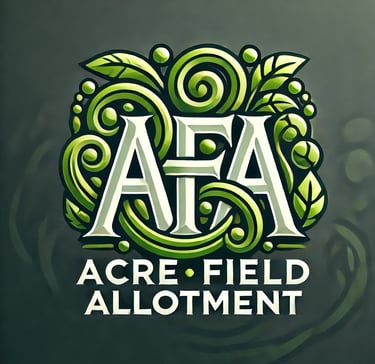Dig or No-Dig? The Big Question for Allotment Gardeners
If you spend any time down at the allotments, you’ll know there’s one topic that always sparks debate: should we dig our plots every year, or switch to the no-dig approach?
On one side, you’ll see gardeners proudly turning over their beds with spades, leaving behind neat, freshly dug rows of soil. On the other, you’ll find the no-diggers, spreading wheelbarrows of compost and refusing to touch a fork unless it’s to lift potatoes.
Both methods can work—but they suit different styles, soils, and levels of energy. Here’s a closer look at the differences, plus some seasonal tips to help you decide.
Traditional Digging on the Allotment
Digging has been the backbone of allotment gardening for generations. Most of us grew up seeing it done: turning over the soil in winter, letting the frost break down the clods, then raking it fine in spring ready for sowing.
Why gardeners dig:
Breaks up compacted soil (common on heavily used plots).
Incorporates manure or compost directly into the ground.
Burying weeds and crop remains feels like a “fresh start.”
But let’s be honest—digging is backbreaking work. If you’ve got a large allotment, double-digging every bed can take weeks of effort. And while it looks tidy at first, weeds often come bouncing back before long.
The No-Dig Approach
The no-dig method has been gathering followers on allotments across the UK, thanks to people like Charles Dowding showing just how effective it can be.
Instead of turning the soil, you simply cover it with a thick layer of compost or well-rotted manure. This feeds the soil life—worms, fungi, and microbes—which in turn improve soil structure naturally.
Why no-dig appeals to allotmenteers:
Less heavy work—great if you’d rather spend time planting than spade-digging.
Compost mulch helps keep weeds down.
Soil structure improves over time, leading to healthier crops.
Beds can be used year-round—no need to wait for frost to break down clods.
The challenge is that no-dig requires a steady supply of compost or organic matter, which can be tricky on large plots unless you make your own or get deliveries.
Pros and Cons on the Allotment
Digging
✅ Helps break up heavy clay soils
✅ Feels like a clean slate each season
❌ Labour-intensive
❌ Can damage soil structure
❌ Weeds often still return
No-Dig
✅ Kinder on the back!
✅ Fewer weeds with good mulch
✅ Builds soil health long-term
❌ Needs compost/mulch supply
❌ Initial set-up can take effort
Seasonal Tips for Dig vs No-Dig
Autumn (Sept–Nov)
Digging: Clear spent crops and dig in manure before winter frosts. This helps break down clumps and improves soil for spring planting.
No-Dig: Simply spread a 5–10cm layer of compost or manure on top of beds. Cover with cardboard if weeds are an issue. Leave worms to do the rest.
Winter (Dec–Feb)
Digging: Let frost and snow break down the soil surface after digging. Avoid working on very wet ground to prevent compaction.
No-Dig: Beds can be left alone. If compost is available, keep topping up lightly. Great time to build compost bins for future mulch.
Spring (Mar–May)
Digging: Rake over beds, remove weeds that survived winter, and prepare fine tilth for sowing.
No-Dig: Pull out any surface weeds, plant straight into the compost layer, and mulch around seedlings.
Summer (Jun–Aug)
Digging: Hoe regularly to keep weeds down, water deeply in dry spells, and consider green manures for bare areas.
No-Dig: Keep mulching around thirsty crops (like courgettes) to retain moisture. Minimal hoeing needed if mulch is thick enough.
Which Method Wins?
There’s no one-size-fits-all answer. On a new or neglected allotment, a season of digging might be the quickest way to get started. But once established, many gardeners find that switching to no-dig makes life easier, crops healthier, and weeds less of a headache.
If you’re unsure, why not try a small experiment? Dedicate one bed to digging and another to no-dig. Plant the same crops and compare. You’ll soon see which method fits your style (and your back muscles!).
Final Thoughts
Whether you’re a die-hard digger or a no-dig convert, what matters most is enjoying time on your plot and bringing home fresh harvests. Still, it’s worth keeping an open mind—the no-dig approach is proving itself across countless allotments, and it might just win you over.
Dig or No-Dig - one page (pdf download)
If you really want to dig in to the - 'dig or no dig' then check out Charles Dowding's beginners guide.
Community
Join us to grow fruits, vegetables and more together.
Acre Field (Mumbles) Allotment Ltd
Registered as a Co-operative Ltd company with the FCA No.4683
Contact
© 2025 Acre Field Allotments
or through our contact form.


